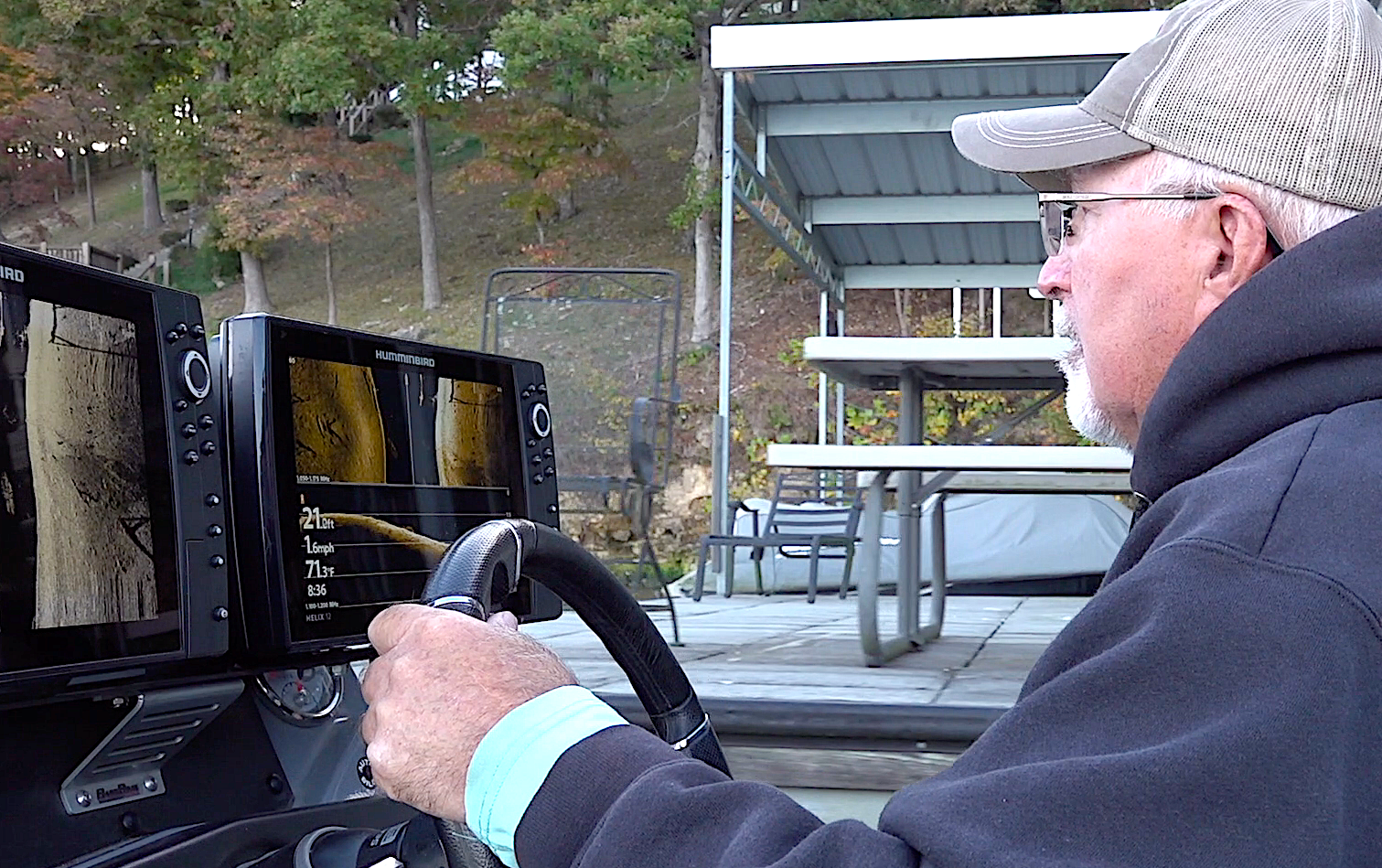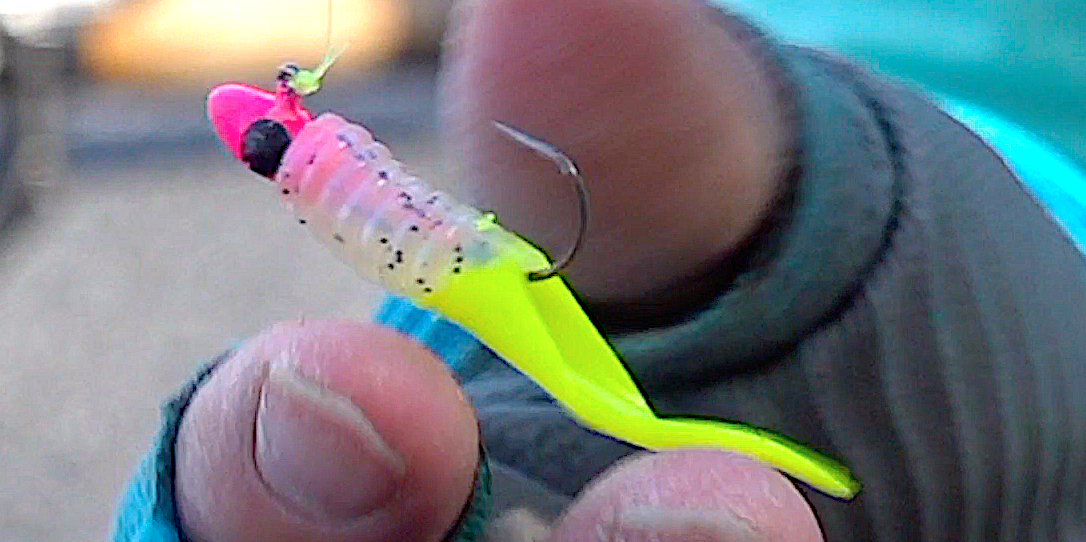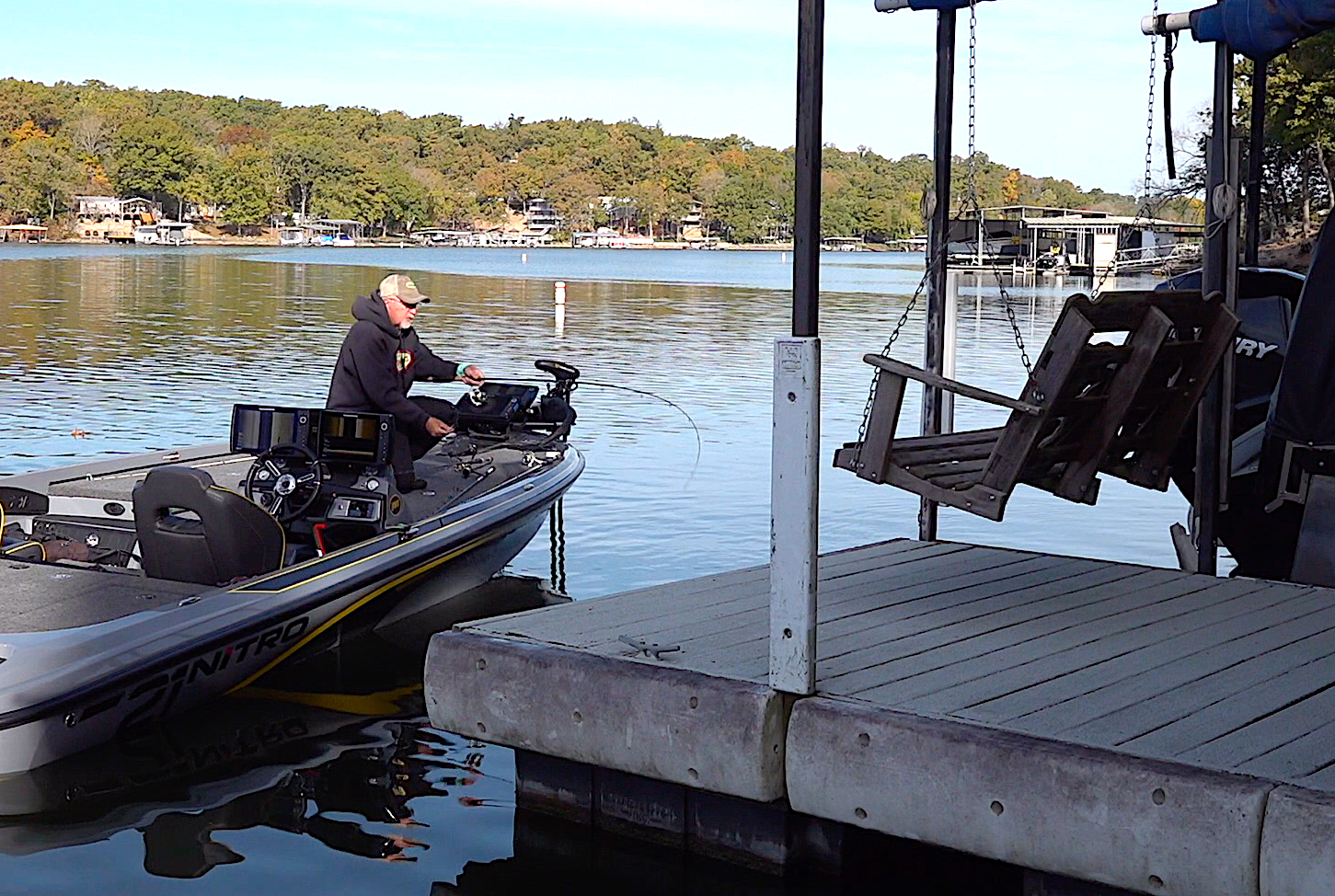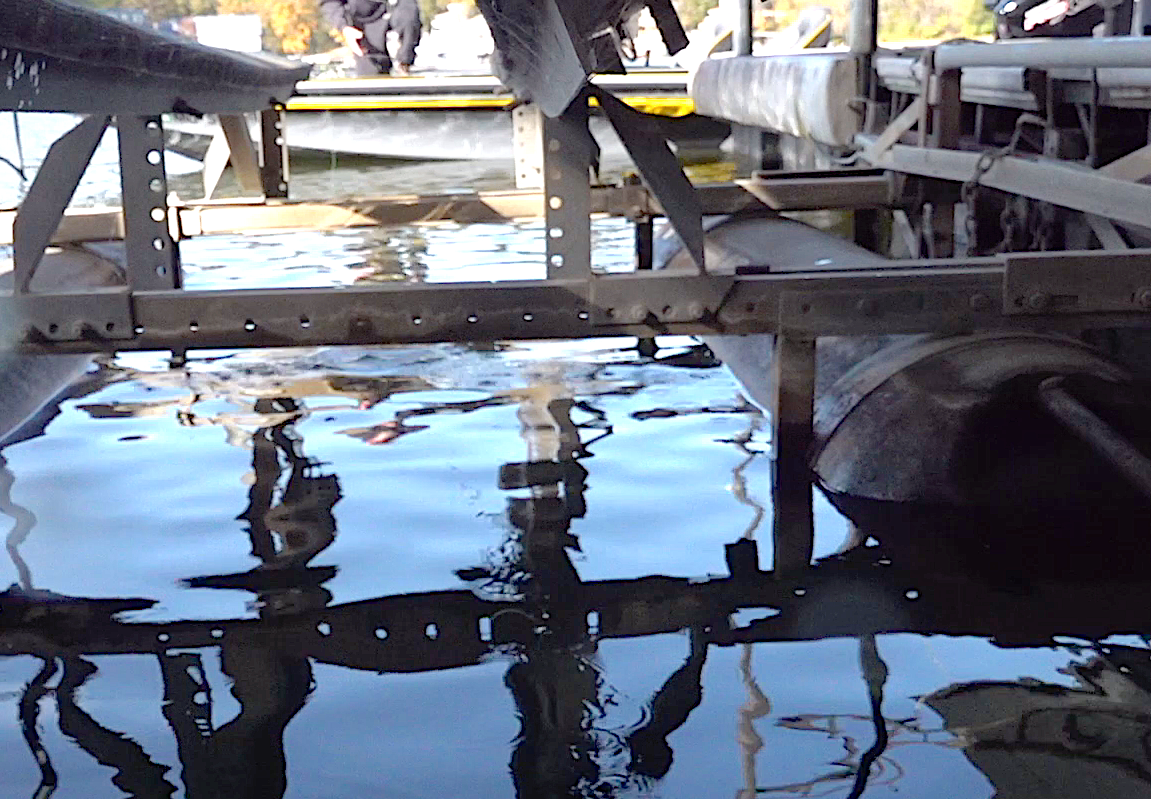- Oct 6, 2021
Your Guide to Shooting Docks for Crappie
Crappie dock shooting expert Terry Blankenship pins fall as prime time for shooting. We asked him for the details about his favorite way to catch crappie.
“I’m sorry we picked such a busy lake day,” Terry Blankenship said with a wry grin as he made a U-turn on the ramp in preparation to back his boat down. There wasn’t another vehicle at the facility, nor a boat in sight, where we were launching on Missouri’s famed crappie water, Lake of the Ozarks.
“That’s the other thing I love about fishing this time of year, I pretty much have the lake to myself during the week,” Blankenship said.
The “other thing” reference wrapped up a discussion we’d had during our 20-minute drive from his home. Blankenship had been telling me why he likes fall best for dock shooting. “From now all the way up to the end of December, this is THE prime time to be dock shooting, and it’s absolutely the most exciting way to crappie fish I’ve ever experienced,” he said.
Blankenship is well known in crappie fishing circles as one of the country’s finest at the technique called dock shooting. For shooting, the angler uses a rod and reel more like a bow and arrow to “shoot” crappie jigs under boat docks, boat lifts, swimming platforms and other structures, accessing hard-to-reach places where crappie like to congregate.
“While lots of outdoorsmen are in the woods chasing deer at this time, this is the only kind of hunting I do,” he explained. “It’s like a bow-shooting game, like a golf game, but what it is most is simply super fun fishing. Part of the enjoyment comes from making the perfect skip into the tiniest opening, but the real thrill is the reward of a ‘thump’ from a crappie after a great shot.”
The Technique
Dock shooting gear typically consists of a light-action rod (not ultra-light, Blankenship stressed, and he prefers one around 7 feet long), a spinning reel spooled with 6- to 10-pound test line, a lightweight jighead (1/24- or 1/32-ounce) and a soft-plastic crappie bait. His favorite skipping baits are the Bobby Garland Baby Shad, Baby Shad Swim’R, Minnow Mind’R and Slab Slay’R.
With one hand managing the rod and reel, the other is used to hang on to the jig and pull it back so that the rod flexes under the load in a manner similar to when an archer draws an arrow on a bow string. The rod’s tip becomes the “sight” for aiming, before a coordinated release of the jig and line together launch the bait so that it flies low across the water’s surface and skips into an opening, going well back under the cover.
Blankenship’s fondness for holding the jighead between his thumb and forefinger is a personal preference from how he originally learned to shoot and many years of doing it that way. However, with the small, sharp hook being right there, such an approach is intimidating to many anglers and especially beginning dock shooters.
To help relieve that anxiety and to facilitate the hold and release, Bobby Garland designed Crappie Shooter Pull Tabs. The tabs are a tear proof, waterproof material that slip over the point of the hook and go behind the barb to give anglers something to hold onto comfortably and safely behind the hook.
Pull Tabs are packaged 24 per pack and come in two pattern options: Natural Fin (looks like a fish’s fin) and Holographic Scale (a highly reflective flashy and sparkly finish). The tabs don’t impair the lure’s flight or action, and don’t hamper the jighead’s fish-hooking ability. They simply make it possible for almost anyone to become proficient at the dock shooting technique in a matter of minutes.
“Like with any sport, dock shooting definitely takes some practice to get really good at it, but even the practice can be fun,” Blankenship said. “There’s no telling how many hours I’ve sat and shot over and over again in my garage or backyard while watching football games or other television programs. Work on your anchor points (where you’re bringing the jig back to), your hold and aiming, and release of the jig. Once the coordination comes together, the accuracy and proficiency continue to improve until the process becomes second nature, just like riding a bike.”
Selecting Docks


Blankenship noted that crappie are always under docks and can be caught year-round by shooting, but as already noted, his absolute favorite period is from October through December. February through April is his next favorite.
Blankenship is an expert at using his Humminbird electronics to quickly scan and determine which docks are holding fish as he idles past. He won’t stop unless he likes what he sees. However, he noted that he was having success with this technique long before availability of such advanced electronics and that anglers don’t have to go high tech to catch fish this way.
In the fall, Blankenship looks for the more isolated docks near deep water areas along main lake shorelines. Going into the backs of creeks, he likes shallow docks near deeper water, especially those that are near creek channel swings.
Docks that have extensive covered surfaces such as large swim platforms or big boats on lifts that are low to the water get his attention. Blankenship says anything that provides lots of shade, even in the cool water months, is the type of cover to direct your focus.
He also stays on the lookout for signs that say, “fish here!” Things like rafts of gulls or pelicans in a stretch of creek with docks nearby are good indicators of baitfish activity in the area that can have crappie in the eating mood and ready for an easy meal.
Also, docks that have exterior lights or other fish-attracting conveniences are good ones to target.
His top tip is to pay attention to everything around you. Subtle signs, like a few shad popping up occasionally on the same dock corner, can steer you to fishing success.
More Patterning Tips:
- Always monitor the depth at the dock you’re fishing.
- Be aware of access to deep water nearby.
- Note the different types of dock construction.
- “Listen” to how the fish are relating to wind and/or sunlight exposures.
- When strikes occur, note the depth and repeat that, along with mirroring any other noteworthy variables for repeated success.
Jighead & Lure Selection


In dock shooting, it’s the lure, not the jighead, that determines the best shooting and skipping projectiles. Jigheads are typically more about holding the lure than they are in contributing to how well or far a bait will skip. As a result, the two most used jighead sizes for crappie dock shooting are 1/24-ounce and 1/32-ounce.
Bobby Garland’s affiliated jighead brand, Crappie Pro, makes a specialty head for dock shooting called the Head Dockt’R in those two sizes. The design’s key features are a tiny head, larger-than-typical hooks (size 4) relative to head size, and unique bait holders that secure soft-plastic bodies without the use of Super Glue. Also, the bait holders provide a quick visual distinction between the two Head Dockt’R sizes. The lighter 1/32-ounce has only 2 keeper rings, while the heavier 1/24-ounce size has three.
Blankenship also has a head he’s designed called the Blankenship Shooter Crappie Head, which has a coil-lock feature to hold a bait in place. Other heads, including Crappie Pro Mo’ Glo Jigheads in the smaller sizes, will work, too, but Super Glue may be needed to secure the baits tightly due to extreme friction when they go skipping along the water’s surface.
Blankenship’s favorite skipping lure is the Bobby Garland 3” Slab Slay’R because he likes its large profile, which he believes appeals to bigger crappie. He also feels he can skip it an extra 5 feet or so farther than he can get from other bait styles. That said, he always has other rods ready and rigged with additional bait profiles, actions and colors, including the original Bobby Garland Baby Shad, Baby Shad Swim’R and Minnow Mind’R. He’ll switch rods frequently to gauge the crappie’s preferences.
Of course, he has his favorite colors for Lake of the Ozarks: Monkey Milk, Blue Ice, Mayfly, Pink Lemonade, Bluegrass, Love Bug and Sour Milk.
Presentation
Blankenship has learned that simply putting an enticing lure into a secluded spot by dock shooting is often enough to elicit strikes because these fish aren’t being bothered by most other anglers. He also knows that the slow descent afforded by the lightweight jighead works in his favor. He will give his jig a few downward twitches during the lure’s fall, but otherwise he just lets it sink slowly
Blankenship is a “line watcher” and prefers high visibility line for that reason. He takes no chances and sets the hook on any sign of something different in the line’s behavior. “It doesn’t cost anything to pull the trigger,” he said, “and a lot of times you’ll hook up with a fish you weren’t sure was even there.”
“More important than how you’re working the bait is to get the lure into the tightest of spots and way back up under docks and platforms where the fish just aren’t being pressured. Trust me, you’ll know when you’ve made a great shot, and most times you’ll be rewarded for it with a catch.”
Blankenship keeps a mental count of how many seconds his bait falls, noting the number when a strike occurs so he can repeat and focus on that count and depth again.
Dock shooting is not something that only works on Blankenship’s home lake or only in Missouri, he noted. “I’ve found dock shooting to work on just about every crappie lake I’ve ever been to and many of those are places where dock shooting really hasn’t caught on yet … those are gold mines for great dock-shooting action.”
“Bottom line is, this is just another crappie fishing technique but it sure is a fun way to fish and catch ‘em. I hope you’ll learn it, practice it and give it a thorough try so you can see for yourself,” Blankenship concluded.
Terry’s Top Tips for Dock Shooting Success


1) Practice, practice and practice. The more you do, the better and more confident you’ll become.
2) Invest in a quality light or medium-light action rod that has a good tip and some backbone. I prefer a rod length of 6’7’’ or 7’.
3) Line pays-off of spools better from a larger spinning reel than the typical smaller-sized crappie reels. I like a reel that would be considered a lightweight bass reel size, more so than a crappie reel.
4) Vary your bait options, not your rod, reel, line and jighead matchups, among your multiple outfits onboard. Having all rods and reels the same improves your shooting accuracy.
5) Pay attention to your anchor points to vary shooting “power.” The more you load the rod, the farther you’ll shoot. Learn through practice what “settings’’ you need for given situations and you’ll control your success.
6) Have fun with it! Dock shooting is a really fun technique, and the more proficient you become, the more you’ll enjoy it, and the more fish you’ll catch!





